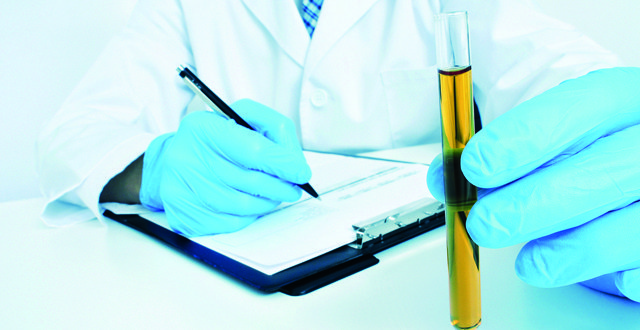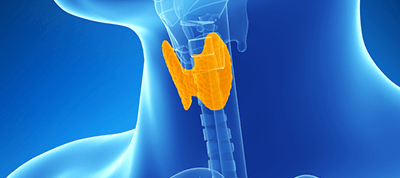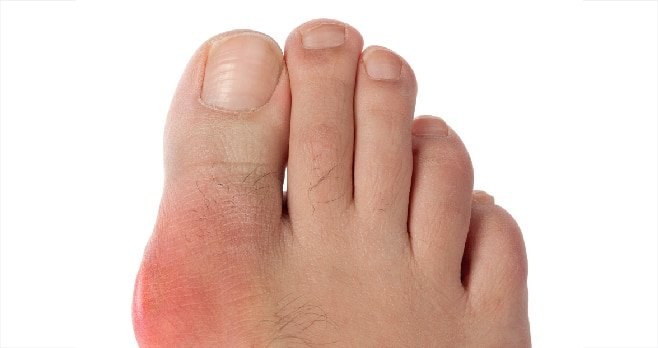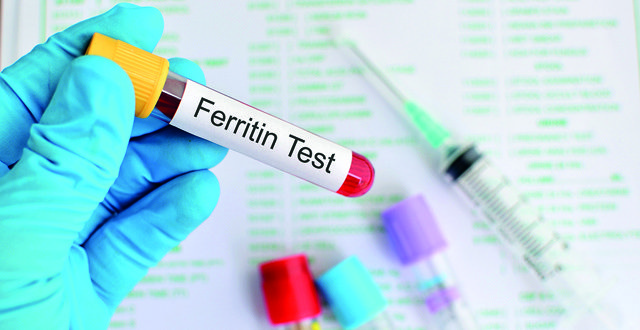Approximately 10 per cent of females are diagnosed with a urinary tract infection (UTI) annually and over 50 per cent of females will have at least one UTI during their lifetime. Typically, uncomplicated UTIs occur in late adolescence and during the second and fourth decades, with up to 30-to-40 per cent of females aged 20-to-40 years having a history of UTIs. Risk factors for UTIs include sexual intercourse, the use of spermicides and ascending bowel flora. After the initial infection, many patients tend to have recurrence, with 25-to-50 per cent of patients having another infection within one year.
In females, UTIs are among the most common conditions requiring medical treatment and occur because of interactions between a uropathogen and host. The pathogenesis of UTIs within the urinary tract involves several processes. Initially, the uropathogen attaches to the epithelial surface; it subsequently colonises and disseminates throughout the mucosa, causing tissue damage. After the initial colonisation period, pathogens can ascend into the urinary bladder, resulting in symptomatic or asymptomatic bacteriuria. Further progression may lead to pyelonephritis and renal impairment. Specific virulence factors residing on the uropathogen’s membrane are responsible for bacterial resistance to the normally effective defence mechanisms of the host. Many bacterial adhesins with epithelial binding sites have been identified. Understanding both pathogenic and anti-adherence bacterial mechanisms will allow healthcare professionals to consider appropriate methods for prevention and management of UTIs.
<h3><strong>Routes of infection </strong></h3>
In healthy females, most uropathogens originate from rectal flora and enter the urinary tract through the urethra into the bladder (see Figure 1). This is known as the ascending route and uropathogens initially adhere to and colonise urothelium of the distal urethra. In patients with an established UTI, up to 50 per cent of infections may ascend into the upper urinary tracts and most episodes of pyelonephritis are caused by ascension of bacteria from the bladder through the ureter and into the renal pelvis. Bacterial ascent is enhanced in pregnancy and ureteral obstruction, as these medical conditions inhibit ureteral peristalsis. Bacteria that reach the renal pelvis can penetrate the renal parenchyma through the collecting ducts and disrupt renal tubules.
In healthy individuals, infection of the kidney through the haematogenous route is uncommon. Occasionally, the renal parenchyma may be breached in patients with <em>Staphylococcus aureus bacteraemia </em>or <em>Candida fungaemia </em>that originate from oral sources in immunosuppressed patients. On rare occasions, bacteria from adjacent organs may penetrate the urinary tract via the lymphatics. Conditions associated with the lymphatic route are retroperitoneal abscesses and severe bowel infections.
<h3><strong>Clinical presentation </strong></h3>
Typically, a UTI presents with symptoms that include dysuria, pyrexia, frequency, urgency and suprapubic pain. Foul-smelling urine and haematuria may also develop. The likelihood of a UTI in female patients presenting with these symptoms ranges from 50-to-90 per cent. Differential diagnosis includes vaginitis, sexually-transmitted infections (STIs) and urethral pathology. Specific features within the patient’s history, physical examination and voided urine may differentiate between vaginitis, urethral infections caused by STIs and other miscellaneous conditions associated with dysuria. Characteristic features of vaginitis include irritative voiding with vaginal irritation and an insidious onset. Urinary symptoms such as frequency, suprapubic pain and haematuria are usually absent. The patient may also give a history of vaginal discharge and multiple sexual partners. Common causes of STIs are herpes simplex virus (HSV), gonorrhoea and chlamydia. Urethritis also causes sub-acute dysuria and is associated with a history of urethral discharge and multiple sexual partners.
<h3><strong>Risk factors </strong></h3>
The most notable risk factors for UTIs in females are prior UTIs and frequent or recent sexual activity. The relative odds for a UTI during the first 48 hours after sexual intercourse are increased by 60-fold and spermicidal agents increase the risk of infection from <em>E.coli </em>or <em>S.saprophyticus </em>by two- to three-fold. Females that frequently develop recurrent UTIs are more likely to have a maternal history of the condition and to have developed their first episode at an early age. In healthy postmenopausal females, sexual activity is a less important predictor of UTI and oestrogen deficiency is believed to play a greater role. Recurrent UTIs in postmenopausal females are more common in patients with cystoceles, urinary incontinence and a previous history of genitourinary surgery. Female patients with diabetes mellitus (DM) are twice as likely to develop a UTI compared to non-diabetic females. The risk of UTI also increases in elderly females residing in institutionalised settings, with the risk of infection showing a direct correlation with increasing age and physical disability.
<strong>Laboratory diagnosis </strong>
A laboratory diagnosis is based on microscopic urinalysis that indicates the presence of pyuria, bacteriuria and haematuria. Pyuria on microscopy has a sensitivity of 95 per cent and a specificity of 70 per cent. The presence of bacteriuria has a sensitivity of 40-to-70 per cent and a specificity of 85-to-90 per cent, depending on the number of bacteria identified. Dipstick analyses for bacteria (nitrite) or pyuria (leukocyte esterase) are useful but remain less sensitive than microscopic assessment of urine. The accuracy of the findings on a culture of mid-stream urine (MSU) depends on how a positive urine culture is defined. Traditionally, ≥105cfu/ml is applied to a voided urine sample. Although the specificity is high, the sensitivity is approximately 50 per cent. Lowering the threshold to ≥102cfu/mL in young females with suspected UTI raises the sensitivity without affecting the specificity. Therefore, urine culture remains the definitive diagnostic investigation for UTI and the presence of ≥102cfu/mL of urine indicates active infection. <em>E.coli </em>is the responsible uropathogen in 75-to- 90 per cent of female patients and <em>S.saprophyticus </em>accounts for 10-20 per cent of cases. Less common organisms are <em>Klebsiella</em>, <em>Proteus </em>and <em>Enterococci</em>.
<h3><strong>Management </strong></h3>
A three-day course of oral trimethoprim-sulfamethoxazole (TMP-SMX) results in eradication of pathogens within seven days after commencing treatment in approximately 94 per cent of females. Single-dose treatment is less efficacious than the three-day course, with eradication rates approaching 87 per cent. However, single-dose treatment is associated with fewer side-effects (11 per cent versus 18 per cent). TMP-SMX is effective and inexpensive for empirical therapy. Therefore, TMP-SMX is recommended in areas where the prevalence of resistance to these drugs among <em>E.coli </em>strains causing UTI is <20 per cent. When used alone, TMP is as efficacious as TMP-SMX and is associated with fewer side-effects, probably because of the absence of the sulfa component. It can be prescribed to patients who are allergic to sulfa. Many recent studies have demonstrated that resistance to TMP-SMX is increasing globally (see Table 1). One study from Israel demonstrated that 29 per cent of cultures grew TMP-SMX-resistant organisms in UTI patients. In this study, microbiological cure was achieved in 86 per cent of patients with TMP-SMX susceptible micro-organisms but in only 42 per cent of those with TMP-SMX-resistant organisms. Another prospective study from the UK demonstrated resistance to TMP in 13.9 per cent of isolates, and patients with resistant isolates had a longer median time to symptom resolution (seven versus four days; p=0.0002), more frequent revisits to their attending physician (39 per cent versus 6 per cent in the first week, p<0.0001), more subsequent antibiotics (36 per cent versus 4 per cent in the first week, p<0.0001) and higher rates of subsequent bacteria at one month (42 per cent versus 20 per cent with susceptible isolates). Studies from the US have demonstrated TMP-SMX resistance rates of 15-to- 23 per cent in isolates from patients with acute uncomplicated UTIs. In a study from Japan, 17 per cent of isolates from patients with UTIs showed resistance to TMP-SMX, and abandonment of TMP-SMX as first-line therapy for acute uncomplicated cystitis is currently under consideration in this region.
Although less than 5 per cent of urine isolates are resistant to nitrofurantoin, it is considerably less active than TMP-SMX against aerobic Gram-negative rods other than <em>E.coli</em>. Furthermore, nitrofurantoin is more expensive than TMP-SMX. It is usually well tolerated, however, it is frequently prescribed for seven days and this may cause significant gastrointestinal upset. Nitrofurantoin is not associated with plasmid-mediated resistance and is a suitable choice for patients with recent exposure to other antimicrobial agents.
<p class=”Pa6″>Fluoroquinolones offer excellent activity and are usually well tolerated. Their resistance is less than 5 per cent in most regions, however, resist ance rates are beginning to increase worldwide. In the Mediterranean region, up to one-third of strains that demonstrate reduced susceptibility to fluoroquinolones belong to two clonal groups: O15:H1 and O25:H4. This implies that strains belonging to these two clonal groups play a major role in determining the increasing rate of flouroquinolone-resistant <em>E.coli </em>strains in the community. One study from Japan reported fluoroquinolone resistance in 8 per cent of isolates from patients with acute uncomplicated cystitis. Worryingly, resistance rates for <em>E.coli </em>isolated from acute uncomplicated cystitis to ciprofloxacin increased from 15.2 per cent in 2002 to 23.4 per cent in 2006. Fluoroquinolones should be regarded as a second-line treatment option due to their high cost and to preserve their sensitivity against uropathogens. Their use for uncomplicated UTIs should be limited to patients who are allergic to less-expensive drugs, patients with previous exposure to antimicrobial agents causing bacterial resistance, and to regions where resistance to TMP-SMX is greater than 20 per cent.
When TMP-SMX is contraindicated, a three-day course of ciprofloxacin, levofloxacin, norfloxacin, lomefloxacin or gatifloxacin is an appropriate alternative. Importantly, fluoroquinolones are less active against <em>S.saprophyticus </em>and many Gram-negative uropathogens. The high <em>in vitro </em>resistance to ampicillin and sulfonamide and the high cost of amoxicillin/clavulanate limit their usefulness in the setting of an acute uncomplicated UTI. More than 90 per cent of females report the absence of acute urinary symptoms within 72 hours after commencement of antimicrobial therapy.
Three days of therapy is the preferred treatment regimen. One study that reviewed over 300 clinical trials of single-dose, three- or seven-day treatment with TMP-SMX, fluoroquinolones and β-lactam antimicrobial agents found that three-day therapy is more effective than single-dose therapy. In addition, three-day therapy with TMP-SMX, amoxicillin or cloxacillin is associated with cure rates that are comparable with longer courses of therapy and an incidence of adverse effects that are as low as single-dose therapy (see Table 2).
In general, young female patients who are asymptomatic after antimicrobial therapies do not require a follow-up visit or repeat MSU. A follow-up visit is recommended with MSU in older females and in all male patients. Urological evaluation with ultrasound, CT or cystoscopy is unnecessary in these females. Patients who do not respond to antimicrobial therapy should undergo appropriate microbiological and urological evaluations.
<h3><strong>Complicated UTIs </strong></h3>
Complicated UTIs may occur in patients with risk factors a compromised urinary tract or by a very resistant uropathogen (see Figure 2).
The clinical spectrum of a complicated UTI can range from mild UTI to life-threatening urospesis. Urine cultures are mandatory to identify the invading uropathogen and its antimicrobial susceptibility in this group of patients. The following are common host-factors that predispose to complicated UTIs:
Functional and/or structural abnormalities of the urinary tract.
Recent instrumentation of the urinary tract.
Recent usage of antimicrobial therapy.
Diabetes mellitus.
Immunosuppression.
Pregnancy.
Hospital-acquired infections.
Due to the wide range of host conditions and uropathogens that are associated with complicated UTIs, appropriate guidelines for empirical therapy remain limited (see Table 3). Patients with mild-to-moderate illness can be treated on an outpatient basis with oral fluoroquinolones. If the susceptibility pattern of the pathogen is known, TMP-SMX may also be effective.
For hospitalised patients, intravenous ampicillin and gentamicin provides adequate coverage against most pathogens. Antimicrobial therapy can also be modified when sensitivity data are available. Therapy is usually continued for 10-to-14 days and switched from parenteral to oral whenever possible. Repeat urine culture should be performed seven and 14 days after therapy to ensure adequate efficacy has been achieved.
<h3><strong>Recurrent UTIs </strong></h3>
Recurrent UTIs are caused by re-emergence of bacteria from a site within the urinary tract (persistence) or from new infective uropathogens outside the urinary tract (reinfection). Bacterial persistence must be caused by the same uropathogen on each occasion and reinfections typically occur at varying intervals and are usually caused by different species of bacteria. It is important to differentiate between persistence and reinfections, as management protocols differ. Patients with bacterial persistence can be cured of recurrent cystitis by identifying and surgically removing/correcting the focus of infection. Patients complaining of recurrent reinfection usually require long-term medical management, as a structural defect is not usually present. Reinfections in males occasionally occur and are usually because of an underlying abnormality such as urethral stricture. In these situations, surgical evaluation is warranted.
Females with recurrent infections and who are exposed to vaginal spermicides from either condoms or diaphragms should consider alternative methods of contraception or protection from STIs.
Continuous and post-coital prophylaxis with low-dose antimicrobial agents is effective in treating recurrent UTIs and prophylactic treatment should not be commenced until active infection has been eradicated. Absence of infection can be confirmed by negative urine cultures one-to-two weeks after treatment has been discontinued.
Continuous prophylaxis is an option for females who have had two or more symptomatic infections over a six-month period. Randomised, placebo-controlled trials have demonstrated that continuous prophylaxis with nitrofurantoin, trimethoprim (± sulfamethoxazole), ciprofloxacin or norfloxacin decreases recurrent episodes by 95 per cent (ie, from two-to-three episodes per patient/year to 0.1-to-0.2 episodes per patient/year) and may also prevent episodes of pyelonephritis. In general, antimicrobial prophylaxis is initiated on a trial basis for a six-month period. If good outcomes are reported, the agent may be continued for two-to-five years without the emergence of a resistant organism. The rate of chronic adverse effects associated with antimicrobial agents ranges from 7-to-40 per cent for trimethoprim containing regimens, from 0-to-40 per cent for nitrofurantoin, from 7-to-21 per cent for norfloxacin and up to 13 per cent for ciprofloxacin. Gastrointestinal disturbances, rash and yeast vaginitis are the most common adverse effects encountered (see Figure 3).
Post-coital prophylaxis is an option for female patients who describe a direct association between sexual intercourse and subsequent UTI. A reduction in the frequency of recurrences has been demonstrated when nitrofurantoin, TMP-SMX or fluoroquinolones have been administered post-coitus. Intermittent self-treatment as opposed to continuous treatment has also been recommended in some scenarios. Many females can accurately self-diagnose an acute UTI and may be instructed to commence a three-day course of an antimicrobial agent at the onset of symptoms. However, females are advised to seek medical attention if symptoms persist 48-to- 72 hours after completing the appropriate antimicrobial course. Several studies have demonstrated that post-coital voiding does not play a preventative role for recurrent cystitis. In addition, it appears that poor urinary hygiene does not predispose to recurrent UTIs.
<h3><strong>Conclusion </strong></h3>
It is important for healthcare professionals to be familiar with the management of UTIs because of their high prevalence. Female patients who present with recurrent UTIs should be advised on avoidance of exposure to vaginal spermicides, and antimicrobial prophylaxis or methods of self-administration may be considered. Imaging studies should be reserved for patients presenting with complicated UTIs. The increasing incidence of antimicrobial resistance in conjunction with the highly prevalent nature of UTIs suggests that prudent and appropriate use of antimicrobial agents is becoming increasingly important.
<strong>References on request</strong>










Leave a Reply
You must be logged in to post a comment.